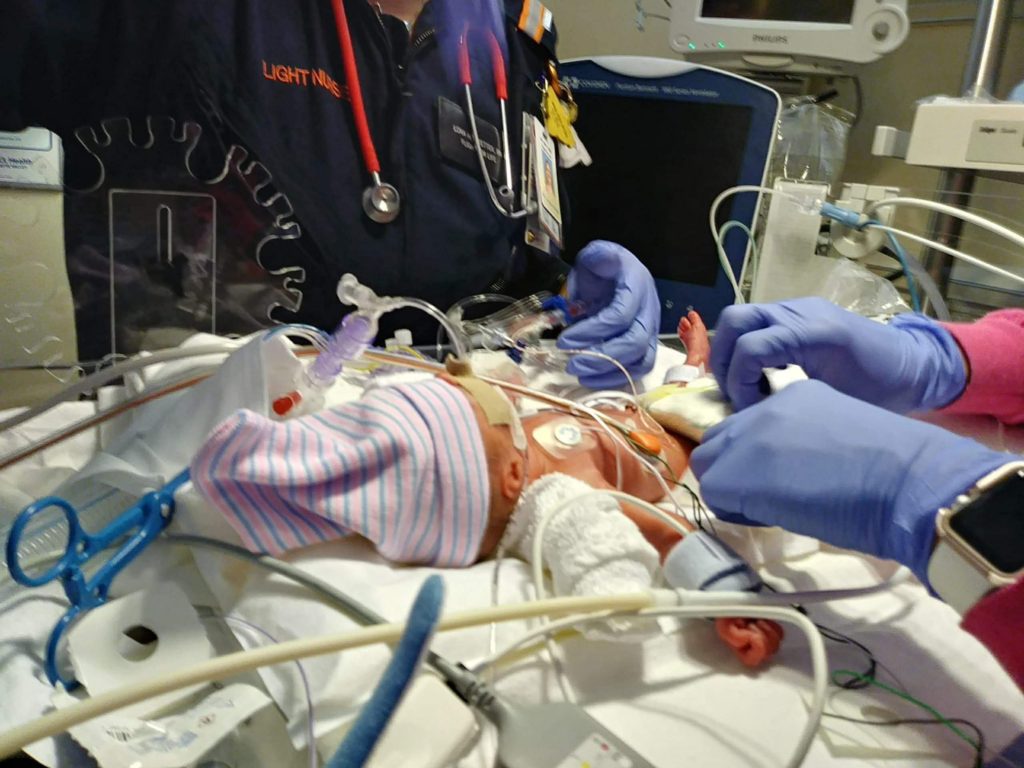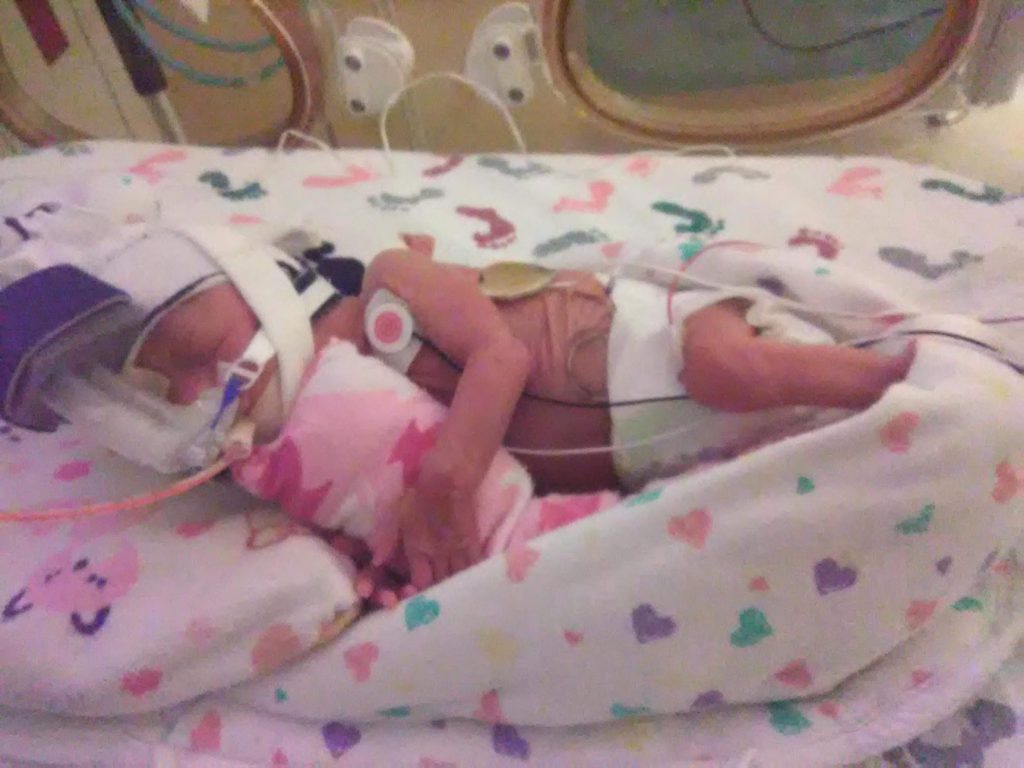She was officially on our periphery. Mom was pregnant with her second child, and she didn’t even have custody of her first. Honestly, what was going to happen when this new little one came along?
More sleepy prayers ensued, and we eventually pushed those thoughts to the back-burner, though they never completely disappeared. Then, only a month later, we got the text:
“You guys, ***** had her baby. It’s a girl. She was very, very early, and things aren’t looking good. They air-lifted her to UC Health, and it’s looking like she’ll be there for quite awhile. Send any prayers you can.”
Love, Mom
That was the moment that set in motion an adventure we couldn’t fathom in that moment. And, self-admittedly, had we known the details up front, we may not have been so apt to handle the full truth at that point, either. I guess that’s why they call them baby steps.
As time went by, more truth unraveled about the baby’s fragile state. She was only 26 weeks along when she was born, meaning this baby made her debut 3.5 months before she was supposed to. She was just 1 pound, 9 ounces at birth—barely a pack of chicken breast—and was immediately air-lifted to University Hospital, next to Children’s Hospital in Aurora, Colorado.
Her mom had suffered a placental abruption, which sent her into preterm labor. Placental abruption happens when the placenta suddenly, often violently, separates from the uterus. In this case, rapid delivery is paramount for the survival of both Mom and babe. In fact, Mom and baby almost died from severe blood loss, and immediate care and a blood transfusion saved Mom’s life.
On top of the traumatic birth, Baby also had a heart condition called ASD (atrial septal defect) and a heart procedure—a blood vessel ligation—at just 14 days old. This procedure was necessary to close the blood vessel that normally closes on its own for a full-term baby. Otherwise, the lungs are overwhelmed with too much blood. With ASD, essentially, the partition between the upper two chambers in her heart (the atria) never had a chance to complete their formation, which resulted in a “hole” in her heart large enough that, according to the 7th best pediatric cardiology team in the country, would likely need to be closed when she turns three. She had apnea of prematurity. She had severe bronchopulmonary dysplasia (lung damage from intubation and prematurity), which ended up necessitating oxygen therapy for a year and two months after birth. Her reflux was so bad, she slept on a bit of an incline, and couldn’t hold food down unless it was fed to her by an sloth-paced nasogastric tube + automated syringe. By the time the syringe deposited all the formula and donated breastmilk it contained, it was time to feed her again. Any faster, and she would aspirate and risk acquired pneumonia, and the bradycardic (heart-slowing) episodes would kick in. They had to stimulate her a few times, actually, because sometimes she stopped breathing as she ate.
Once we learned of the baby’s early birth, and where she was, we started asking questions. Her mom was in a different hospital for a short stint, and, she wasn’t with the baby once she was discharged. So, who was keeping the baby company? What would become of the baby since she tested positive at birth for a cocktail of drugs? Would she end up another spiraling blur in the foster care system?
The more questions we asked, the brighter the light shone on the fact that we had to do more, because no one else was doing anything at all, outside of the precious nurses and doctors in the NICU.
“Forget the reckless things we’ve done; I think our lives have just begun.”
Muse

